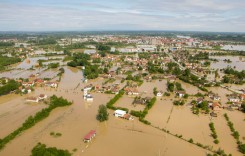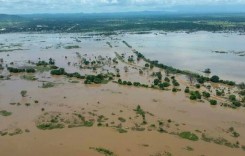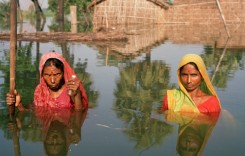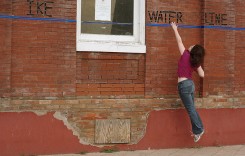According to the diagnostic report on the El Niño Southern Oscillation (ENSO) issued by the National Oceanic and Atmospheric Administration (NOOA) in March, the sea surface temperature (SST) anomalies across the equatorial Pacific have been decreasing since January 2016.
The strong 2015-2016 El Niño Southern Oscillation phenomenon is weakening and models indicate a transition to neutral conditions for the May – June period.

Nevertheless, during the decreasing phase of ENSO significant rainfall events may still occur.
Now El Niño has peaked, a first analysis on the effects and impacts of this strong ENSO season in South America can be set out.
Extreme SST anomalies (up to 3 degrees) were recorded in the central Pacific, with values higher than the records for the El Niño 1982-1983 and 1997-1998 seasons.

Despite these anomalies, the magnitude was generally lower and effects on South America haven’t been as severe as for the previous strong ENSO seasons.
El Niño is a chaotic phenomenon, hard to predict in his effects on the ground. Nevertheless, preparedness played an important role in reducing impacts of this El Niño season.
El Niño and Floods in South America
The major impact in term of floods occurred between December 2015 and January 2016, especially in northern Argentina, southern Brazil, Paraguay and Uruguay with the Paraná, Paraguay and Uruguay Rivers inundation that caused more the 150,000 people from their homes.
Apart from this significant event, few instances of prolonged rainfall have been observed in the South America region, leading to a lower occurrence of major, prolonged flood events.
The difference is especially apparent if compared to extreme events occurred in non-ENSO seasons such as the Beni-Mamoré flood of February 2014 in Bolivia.
However, several localised floods, caused by short, intense rainfall events, were recorded in Argentina, Bolivia, Brazil, Ecuador and Peru.
Many of these flood events occurred in cities or densely populated areas, therefore causing significant damages and resulting in several causalities.
Such localized floods occurred in Guayaquil (25 January 2016), Cordoba (15 February 2016), Arequipa (22 February 2016), La Paz (24 February 2016), Rio de Janeiro (29 February 2016) and São Paulo (11 March 2016).
In some areas, such as Bolivia and Colombia, the season has been characterised more by drought than by floods, leading to higher fire risk and significantly affecting agriculture production. The effects of this drought are expected to be particularly severe in Bolivia, where the rain season is coming to an end with little water stored in the catchments.
El Niño – Preparedness in Peru
Peru was one of the countries that suffered most the effects of this El Niño season, with several floods and landslides reported all over the country from north to south.
Nevertheless, attention and response to these severe events by the Civil Defence authorities has been timely, limiting major damages and loss of life.
Preparedness and disaster risk management for the 2015-2016 season have been a primary goal for the political and technical authorities of the Peru Government, since the Action Plan on Disaster Management issued on October 2014.
Following the indications on future climate given in August 2015 by NOOA and the National Research on El Niño Phenomenon (Estudio Nacional del Fenómeno del Niño, ENFEN) the Peru Government issued an Emergency Decree on the 7 September 2015, adopting exceptional political, economical and financial measures to face the upcoming severe climate phenomenon.
The Emergency Decree authorised the funding and execution of structural and non-structural actions to reduce risk and enhance preparedness for the upcoming 2015-2016 El Niño.
A National Committee for the El Niño Phenomenon Risk Management was created, integrating the work of several government agencies or ministries including Internal Affairs, Agriculture, Education, Transportation, Health, Defence, Economy and Finance, Public Works and the National Disaster Manager Secretariat.
Increased funding was allocated for the National Institute of Civil Defence (Istitudo Nacional de Defensa Civil, INDECI) and for other involved institutions. As many as 10,000 teachers have been trained in a program of the Ministry of Education to communicate risk and strength risk preparedness in educational centres.
This structured response adopted in advance by Peru allowed prompt action in response to severe weather, significantly reducing the exposure and vulnerability to El Niño related events.








